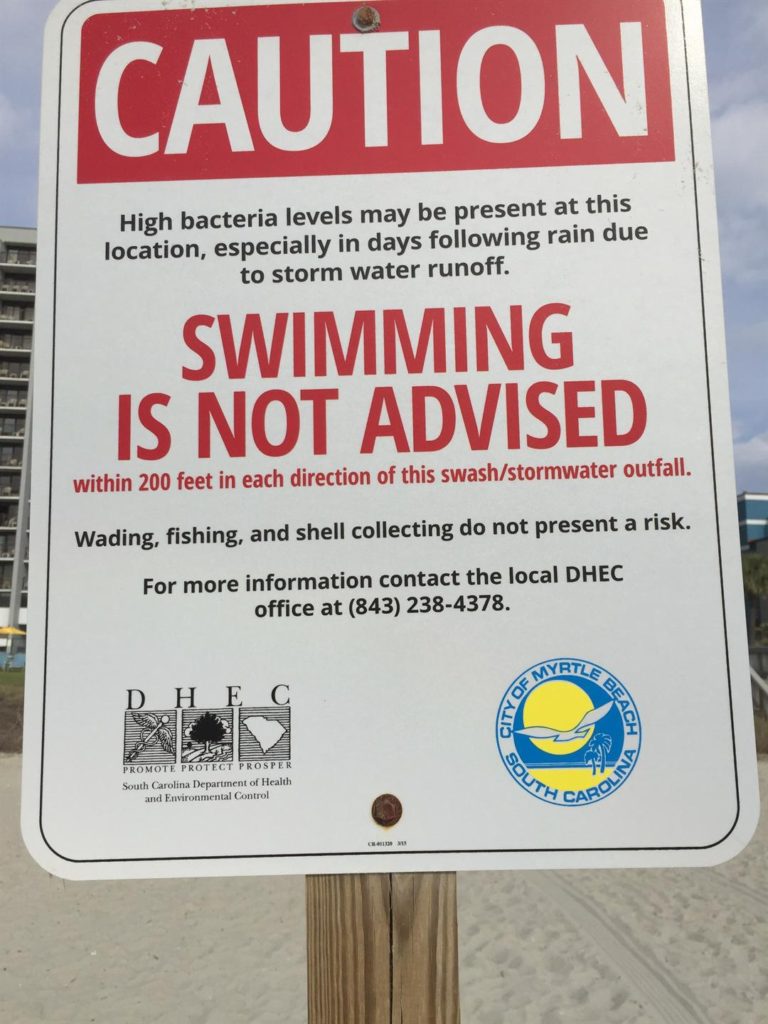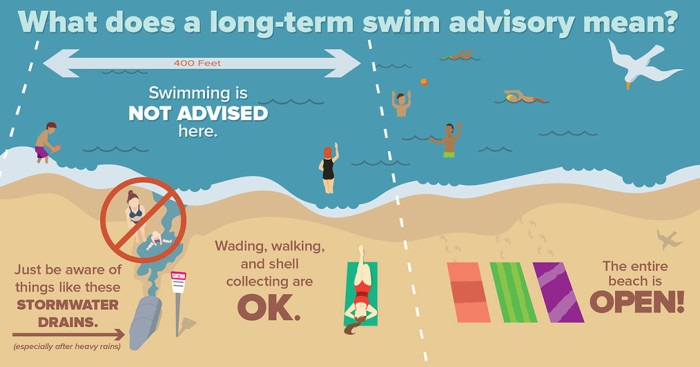According to researchers at the University of South Carolina, an emerging toxic microbe lurks on the SC coastal beaches. Older fat men are most at risk of contracting the virus.
The microbe gets into swash (drainage) areas on the beach after heavy rains. MyrtleBeachSC news has reported ongoing about how beach areas can become infected as much as 92 times unsafe for swimming. (LINK)
The microbe, called vibrio, has grown more prevalent in brackish coastal waters during the past 20 years as over-development along coastal areas and subsequent hurricane floodings are now exposing swimmers and fishermen to the virus’ unpleasant effects.
For men averaging 48 years and older, the vibrio bacteria can wash into open cuts or sores. Afterwards, conditions rapidly worsen, causing swelling and massive infections. Once the virus seeps into wounds, it gets into the blood stream, attacking a person’s liver, eventually causing cirrhosis and even liver cancer. This according to research scientist Geoff Scott at the University of South Carolina.
No group appears more susceptible to liver problems than overweight men, USC scientists say. Because of their metabolism and physiology, obese men over 40 years old appear more at risk of developing health problems from vibrio exposure than women and younger people.

“That is what the data show, that older males are most susceptible to vibrio wound infections,’’ said Scott, who is leading a national effort by five universities to study how climate change and oceans affect human health.
“The beach season is about to begin,’’ USC’s Scott said. “We’ve got to let people be aware and know about this because we may save a life along the way. You never know.’’
Myrtle Beach’s Coast Flooded Fall of 2018

Healthy men, who exercise regularly and eat well, are less likely to get vibrio infections if they go swimming with open cuts. Everyone should know the risk, however, if they have a wound and plan to swim or fish on the coast, experts say.
SEWAGE LEAKS
Just this past week, a sewage leak spilled an unknown amount of sewage into the Withers Swash. The Withers Swash drains onto the beach at 3rd Avenue South in downtown Myrtle Beach. This is the second such spill in less than one year. In 2018, the same area leaked causing the Sun News to report: 100,000 gallons of sewage spilled in Myrtle Beach streets. Could it happen again?
Such leaks only work to compound the problem.

While maps put online by the SC Department of Health and Environmental Control are helpful, concerns remain that not enough vacationers are getting the information.
According to the State Newspaper: USC, Baylor University, the University of Maryland, the College of Charleston and The Citadel are involved in studying the Vibrio project that got off the ground last year. Scott and Paul Sandifer, a former director at the S.C. Department of Natural Resources, are leading the effort. The research is being funded through a $5.7 million grant from the National Institute of Environmental Health Sciences.


